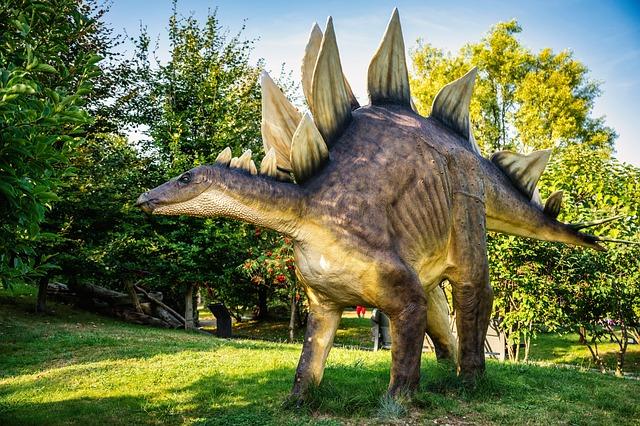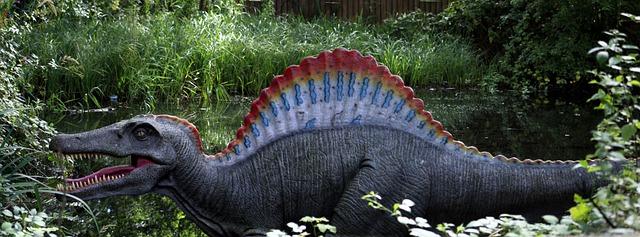In the vast, whispered secrets of the Gobi Desert, where winds sculpt the landscape and time seems to stand still, paleontologists have stumbled upon a remarkable treasure: a previously unknown dinosaur species sporting an extraordinary pair of claws. This groundbreaking discovery sheds light on the rich tapestry of life that once flourished in the region, inviting experts to unravel the mysteries surrounding the formidable creature that roamed the Earth millions of years ago. With its unique adaptations and potential behaviors, this two-clawed dinosaur not only adds to the fascinating narrative of prehistoric biodiversity but also emphasizes the importance of ongoing exploration in one of the world’s most enigmatic ecosystems. Join us as we delve into the details of this remarkable find, revealing the implications it holds for our understanding of dinosaur evolution and survival in ancient environments.
Unveiling the Two-Clawed Dinosaur: A Breakthrough in Paleontology
In a groundbreaking discovery, paleontologists have unearthed a new dinosaur species in the Gobi Desert, characterized by its remarkable two-clawed hands. This unique adaptation suggests a novel approach to its environment, offering insights into the evolutionary adaptations of theropods. Researchers believe that these two claws might have played a critical role in foraging and navigating the rugged terrain of its prehistoric habitat.
The species, tentatively named Dinoclawicus, manifests physical features distinct from its three-clawed relatives. The evidence gathered from fossils indicates that this dinosaur had:
- Small size – potentially making it agile and quick.
- Robust claws – ideal for grasping and tearing apart vegetation.
- Unique limb structure – providing an evolutionary advantage in a competitive ecosystem.
As research continues, scientists are excited about what this discovery means for our understanding of dinosaur diversity. The two-clawed design appears to challenge previous assumptions regarding theropod morphology, suggesting that this lineage might have had a wider range of adaptations than initially thought. Below is a summary of key characteristics of the newly discovered dinosaur compared to its contemporaries:
| Feature | Dinoclawicus | Typical Theropod |
|---|---|---|
| Claw Count | Two | Three |
| Size | Small | Medium to Large |
| Diet | Herbivore | Carnivore/Omnivore |
Exploring the Implications of Gobi Desert Discoveries on Dinosaur Evolution
The recent discovery of a new two-clawed dinosaur species in the Gobi Desert has sparked significant interest among paleontologists and evolutionists alike. This region, known for its well-preserved fossils, continues to unveil incredible insights into the lives of dinosaurs. The implications of this find challenge some long-standing theories about dinosaur morphology and adaptive strategies, suggesting a potential shift in how we understand the evolutionary tree of these magnificent creatures.
What makes this discovery even more intriguing are the features of the two-clawed species that diverge from common dinosaur traits. Some aspects to consider include:
- Unique Limb Structure: The unique arrangement of its limbs offers clues about how these dinosaurs may have moved and hunted in their environments.
- Dietary Implications: The physical adaptations suggest potential dietary habits that differ from other known species, potentially indicating a niche that has yet to be explored within the tropical ecosystems of that era.
- Behavioral Patterns: The structure may hint at unique behavioral tactics, lending insight into social structures and survival mechanisms in prehistoric climates.
To contextualize this discovery in the broader landscape of dinosaur evolution, we can draw comparisons to known species from the same time period. The following table highlights key differences between this new species and its closest relatives:
| Feature | New Gobi Species | Closest Relative |
|---|---|---|
| Limb Structure | Two claws | Three claws |
| Size | Medium | Large |
| Habitat | Desert | Tropical Forest |
This discovery not only enriches our understanding of dinosaur diversity but also emphasizes the importance of continued excavation and research in prehistoric sites. As more findings emerge from the Gobi Desert, they could redefine our comprehension of dinosaur evolution, their adaptation strategies, and their ecological roles during the Mesozoic era.
Examining the Unique Features and Adaptations of this New Species
The recent discovery of a two-clawed dinosaur species in the Gobi Desert reveals fascinating adaptations that enhance its survival in a harsh environment. This species, characterized by its unique morphology, showcases several features that set it apart from previously known dinosaurs. Notably, the two claws on its forelimbs suggest a specialized feeding strategy, possibly adapted for grasping and tearing open tough vegetation or other food sources. The prevalence of arid conditions in its habitat may have driven the evolution of these distinctive claws.
Among the remarkable adaptations, researchers have identified the following traits:
- Camouflaged Skin Texture: The skin of this dinosaur exhibits subtle patterns that likely provide effective camouflage against predators.
- Advanced Sensory Capabilities: Enhanced vision and acute hearing, possibly evolved to detect movements of both prey and potential threats in a sparse environment.
- Robust Limb Structure: The muscular build of its limbs indicates a propensity for swift movement, allowing the dinosaur to escape danger quickly.
To further understand the ecological role of this new species, a comparative analysis with other dinosaurs reveals its unique place in the Mesozoic ecosystem. Below is a brief table summarizing distinctive features in comparison to closely related species:
| Feature | New Species | Closely Related Species |
|---|---|---|
| Claw Structure | Two claws, grasping | Three claws, slicing |
| Skin Adaptation | Camouflaged patterns | Solid color |
| Speed | High agility | Moderate speed |
The findings suggest that this two-clawed dinosaur not only adapted efficiently to its environment but also played a unique ecological role that might shed light on the diversity of life forms during its era. As more research unfolds, we can expect to uncover additional aspects of its behavior and interactions within the prehistoric ecosystem of the Gobi Desert.
Recommendations for Ongoing Research and Conservation Efforts in Fossil Sites
In light of the remarkable discovery of a two-clawed dinosaur species in the Gobi Desert, it is imperative to intensify ongoing research and conservation efforts at fossil sites globally. Collaborative initiatives involving paleontologists, local communities, and conservationists can enhance our understanding of these ancient creatures and ensure their preservation. To achieve this, it is important to focus on the following areas:
- Interdisciplinary Collaboration: Foster partnerships between geology, ecology, and archaeology experts to create a holistic approach to studying fossil sites.
- Public Engagement: Involve local communities in conservation efforts by providing educational programs that highlight the significance of paleontological findings.
- Technological Advancements: Utilize modern technologies such as 3D scanning and virtual reality to document and present fossil discoveries, making them accessible to a wider audience.
To prioritize effective conservation strategies, it is essential to establish clear guidelines for fossil site management, ensuring a balance between exploration and preservation. A proposed framework could include measures such as:
| Conservation Measure | Description |
|---|---|
| Legal Protections | Implement laws to protect fossil sites from illegal digging and exploitation. |
| Regular Monitoring | Establish a monitoring system to assess site conditions and prevent damage. |
| Research Funding | Secure funding for ongoing research and excavation projects in significant fossil sites. |
integrating sustainable tourism practices into fossil site management can provide additional resources for conservation. By promoting eco-friendly tourism that educates visitors on the importance of these sites, we can generate funds while preserving the integrity of paleontological treasures. Strategies could involve creating guided tours led by knowledgeable experts and facilitating workshops that engage visitors in hands-on experiences, ensuring both education and conservation go hand-in-hand.
Concluding Remarks
the discovery of the two-clawed dinosaur species in the Gobi Desert adds a fascinating chapter to the ever-evolving narrative of our planet’s prehistoric past. As paleontologists continue to unearth ancient secrets buried beneath the arid sands, each finding not only enriches our understanding of dinosaur diversity but also highlights the complexities of evolutionary adaptation. The remote Gobi Desert, with its mysterious landscapes and rich fossil deposits, remains a treasure trove for scientists eager to piece together the puzzle of life millions of years ago. As we delve deeper into the annals of history, one can only wonder what other remarkable species are waiting to be uncovered, ready to reshape the way we perceive the ancient world. The journey of discovery continues, reminding us that in the realm of paleontology, there is always more than meets the eye.
